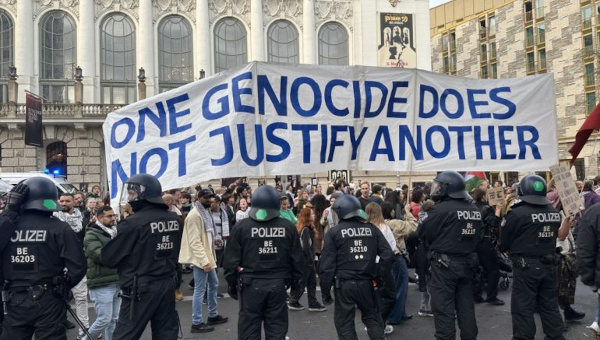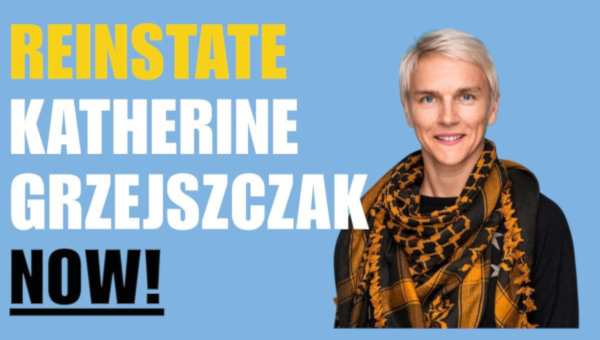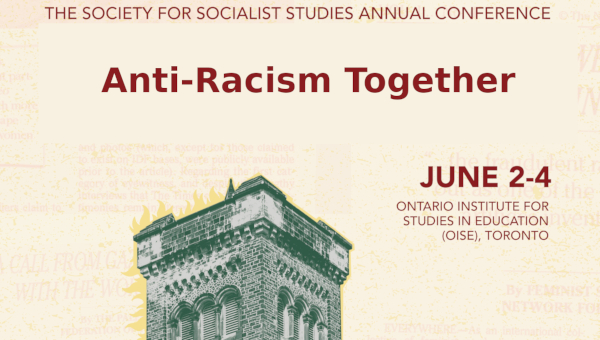Systemic Racism in the US and Israel: Analogies and Differences
A most relevant analogy between the US and Israel lies in the principal rationale for the force of their establishment as settler-colonial states. Imperialism, which is the driving force of the settler colonial project, is inherently racist and racializing. With the establishment of the state, racialized capital becomes structural and institutional; it becomes systemic. The differences between the two regimes are also there, based on the fact that each case is historically specific.
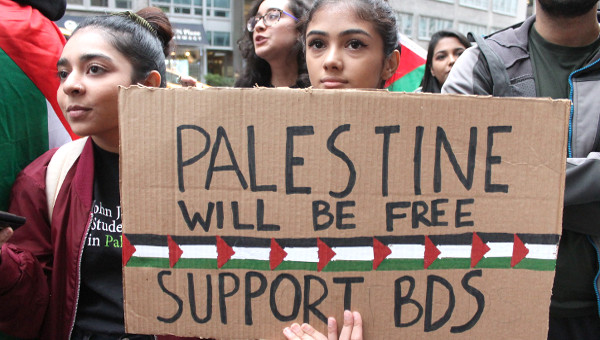
Without going into details, it is essential to point out that the very establishment of the settler-colonial state, whether the US or Canada or Israel to name just a few, necessitates the elimination of the indigenous people. In the case of both the US and Canada, settler-colonialism began with the removal of indigenous peoples (with quite distinct histories between the two with the long period of European dependence on First Nations in the North and West in Canada) – a process that involved genocide/erasure and conquering indigenous lands by white European settlers.
In the process, the vast areas stolen from their indigenous owners necessitated vast amounts of labour-power, cheap working hands to work it. Herein lies the enslavement of African peoples and their use as slave labour. For, whereas elimination/erasure and genocide enabled the establishment of the colonial state, slavery was needed to generate, reproduce, and ensure the growth of US imperialism. The US brought Africans as slaves and shackled them as chattel. In the process, many were killed, and the rest sold in bondage. Their racialization continued for hundreds of years until this day.
Settler-Colonialism
Racializing African Americans and others is an ongoing process, regardless of changes in their legal status. The Jim Crow laws and the 13th Amendment (1864) to the United States Constitution, despite their legal abolition, settler-colonial racialization remained with us until today. Slavery of Black peoples transferred from the public sphere into that of the prison. The prison industrial complex is over-populated by Black and other racialized populations. In other words, the state might change or abolish laws, but the latter’s ramifications and spirit stay put. The systemic nature of race and racialization is not likely to disappear with changes in the judicial system. Other laws, albeit veiled with convoluted logic, for example, the Three Strikes Law (1994) was added rather recently. This term, derived from American baseball, is fundamentally racist in its stipulation. Racialization seeps deep into the white supremacist mentality of the settler colonizer. The settler colonizer might want to see itself and be seen by others as ‘democratic’, ‘free’, etc… Still, it ignores that its racialized creation will always be there as long as it is, namely, the colonial settler system remains alive. Capitalist racialization, and settler colonialism, as Achille Mbembe, an advocate of Palestinian rights, says ‘is like a virus, it mutates and spreads.’
Zionism, I argue, is one such virus with its own particular history and mutations. It is different from the White European settler-colonial projects not because it is not White or European in origin, nor because it is not settler-colonial. Zionist settler colonialism is different because it uses a particular ideology, namely converting Judaism and Jewish ethnicity into a Jewish ethno-nationalism common in the late 19th century, as political justification and shield for its colonial project.
No one can take away from the calamities of the Holocaust perpetrated by the Nazi regime in Germany or the long history of European anti-semitism. However, this should by no means lead to using the Holocaust as a justification for eliminating and disappearing the Palestinian people; this should not justify Zionist use of brute force in forcefully expelling around 80% of the Palestinian people from their homes, lands, and historical and cultural space. The Zionist colonial project, from the outset, aimed at erasing indigenous Palestinians and replacing them with Jews from all over the world. This project aims to make Jewishness akin to Zionism and akin to the ‘need for a Jewish state in Palestine’, (and the claims to this day of Israel as an ethno-nationalist Jewish state). The latter constituted the basis for the 1917 Balfour Declaration, where the British colonial government gave the Zionist movement the right to establish a Jewish home in Palestine. This project developed further and turned into a state which, since 1948, wanted to see itself as Jewish. Since its very establishment, Israel aimed to disappear the indigenous Palestinians and transform itself into a Jewish state, an act, at least legally, was realized recently with the decreeing of the Jewish Nation-State Law.
The Zionist project used all the above moves in its attempts to equate Zionism with Jewishness. Conflating Zionism with Jewishness has far-reaching ramifications. It contributes to the legitimization of Zionism and Israel as an ethno-nationalist state, and, in turn, criminalizes anti-Zionism and silences criticisms of Israel settler-colonialism.
As mentioned earlier, the spirit of the Jim Crow laws in the US, with its perverted reality of ‘separate but equal’, which means separate and oppressed, did not disappear with abolishing the law. As Michelle Alexander reminds us, it has remained through the ‘Prison Industrial Complex’, unequal access to voting, and structural economic inequalities.
Israel has implemented a similar perverted reality of racialized policies and practices. The very few Palestinians left on the land after the 1948 Nakba, was placed under military rule until 1966. It was forbidden to leave their village or town without a permit from the Israeli military governor (al-Haakem al-Askari). This population, referred to by the Israelis as the Arab sector, remains primarily excluded from the mainstream Israeli economy. It is de-developed, under-funded, with high rates of poverty, unemployment, poor health conditions, poor access to education and inadequate social services. Moreover, since 1967, Israel issued 65 racist laws discriminating against Palestinian citizens and Palestinians in the Occupied Palestinian Territories. Since then, hundreds of thousands of Palestinians were detained for political reasons.
Mass Incarceration
Mass incarceration of the racialized and colonized is an essential point of comparison between the two states. In both cases, incarceration itself is a political act in the service of state securitization. We need to remember that both states here are police and militarized. They both can invade, bomb countries, and kill people, merely because they can, while the world is watching. While externally, both states have turned into a pariah, internally, these states used their police and military against their racialized and colonized populations.
In the US, privatization of prisons turned incarceration into a valuable source of surplus value and profit. The mass incarcerated population, disproportionately Black and racialized, have been used as prison labour, reproducing and augmenting US capital. Prison incarceration in Canada, too, is disproportionately made up of indigenous people and Blacks, although prison labour is nowhere as extensive as it is in the US. On the other hand, in Israel, incarceration is more political than economic serving the eliminatory/disappearing goal of Israel’s settler colonialism. Palestinian political prisoners are abducted from the occupied Territories and brought by the Israeli military into Israeli prisons as further means of oppression, control and disappearing.
Racial disparity in Palestinian death; the discrepancy in poverty; their reception of social, educational and health services throughout Palestine-Israel, are comparable if not analogous to such disparities, characteristic of the racial divide in the US and even in the Canadian settler-colonial regimes. Still, this racial disparity is systemic to the settler-colonial systems of these countries.
Apartheid in racial South Africa may have been historically specific. Still, its primary mover and structural context, namely the settler-colonial regime, reproduces apartheids in different forms wherever it is in control. The so-called ‘separate and equal’ system in the US had its own form of apartheid, where the Blacks were economically, politically, socially, and legally excluded from mainstream white America, if never formalized into the overall regime as in South Afirca. Apartheid Israel is yet another form of exclusion and oppression. In the Israeli case, apartheid principles did not emerge with the ‘Separation Wall’, nor with the occupation of the Palestinian territories in 1967. Apartheid, as mentioned earlier, started with the very establishment of the settler-colonial state and became more pronounced after 1967. Most of us are conscious of the extent of the Palestinians’ strangulation in the occupied territories, especially in the air, land, and sea besieged Gaza Strip. This situation led apartheid experts, notably Nelson Mandela and Archbishop Desmond Tutu, to declare Israeli apartheid as a much worse kind than that in South Africa. For, whereas apartheid South Africa followed the logic of inclusion and exploitation, Israel, which always sought the disappearing of the Palestinians, utilized the logic of exclusion and oppression and employed inclusion/exploitation only when needed. An example here is Israel’s consistent immigration/settlement moves since its establishment and the constant waves of Jewish (and non-Jewish) settlers recruited to Palestine.
From the inception of the Israeli state, White European Jewish settlers realized they could not form the nation, build the military, the economy, and work the land by themselves. They also realized they could not disappear the Palestinians without replacing them with immigrants to settle the land and provide cheap labour-power. Hence, Israel’s policies in the 1950s and 1960s of importing hundreds of thousands of Mizrahi-Arab Jews. In Women in Israel: Race, Gender and Citizenship (Zed, 2011), I highlight the harsh and racialized treatment of this community and describe the terrible living conditions they endured in the first several decades.
A more comprehensive analysis of Israeli racism and racialization of African-Arab/Mizrahi Jews, while necessary, is unfortunately not within the purview of this article. Mizrahi Jews, it is worth noting, though made up over 60 percent of the Israeli population until the late 1980s and early 1990 when the state imported about one million ‘Russian Jews’. Suffice it to say here that Zionism employed racism and racialization against the Jewish population it claimed to protect. Zionism, in other words, was no different than other white European settler colonizers.
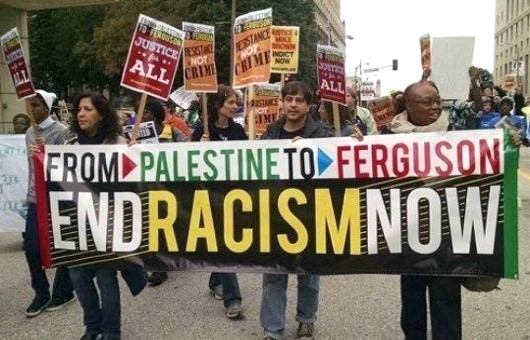
Zionism and the Israeli state are being exposed today for their fundamentally racist and racializing nature. Critique of Zionism became very clear with the rise of anti-Zionist movements, and groups like the US Jewish Voice for Peace, and Canadian sister organization, Independent Jewish Voices, the global Rally Against Racism, Not in My Name, and so on. The global solidarity with Black Lives Matter is currently lending credence to the Palestinian solidarity as well.
Palestinians in historic Palestine (occupied 1948 and 1967), to re-emphasize, are colonized, racialized and oppressed. They live under Israeli settler-colonial rule. Moreover, racial inequality characteristic of Israeli society characterizes the lived conditions of non-white Jews. Therefore, it is no surprise that not all diaspora (white) Jews support Zionism, and deepening fractures in the support of the Israeli state and its policies of colonization and separation.
Global Solidarities Against Racism
If it is true that settler colonialism, oppression, race and racialization are historically specific, there are also universal traits that characterize racialized capitalism and settler colonialism. Historical specificity does not mean uniqueness; it should not blur people’s potential, agency and struggle. Structures of oppression, including the exploitative and oppressive powers of the state and capital, work in tandem. Their dismantlement is possible and successful when fought globally, and not just individually and locally.
The success of the Palestinian fight for equality and self-determination against Israeli settler-colonialism, and against the military police state, is possible when fought as part of the global struggle against racism, oppression and settler colonialism. Solidarity between African Americans, in the form of the Black Liberation Struggle in the US (specifically the Black Panthers), and the Palestinian liberation movement in the 1960s and 1970s, are reverberating again today in the global uprising against racism. It is evident in the collaboration between Black Lives Matter, the global solidarity with the ‘Boycott, Divestment, Sanctions’ campaign and its high profile endorsement from South Africa to Mozambique to Kenya, many union and social movements in Canada, to mention just a few. The current historical movement expressed in the global solidarity with Black Lives Matter represents an actual global call of resistance to existing global forces of oppression. We Palestinians join our voices to those of indigenous peoples and Black peoples in demanding justice globally.
In the militarized settler-colonial state of Israel, every living Palestinian in the Occupied Palestinian Territories is a potential George Floyd. As the killing of George Floyd has awakened the world, this awakening must also be expanded to include the Palestinians’ need to breathe. •


